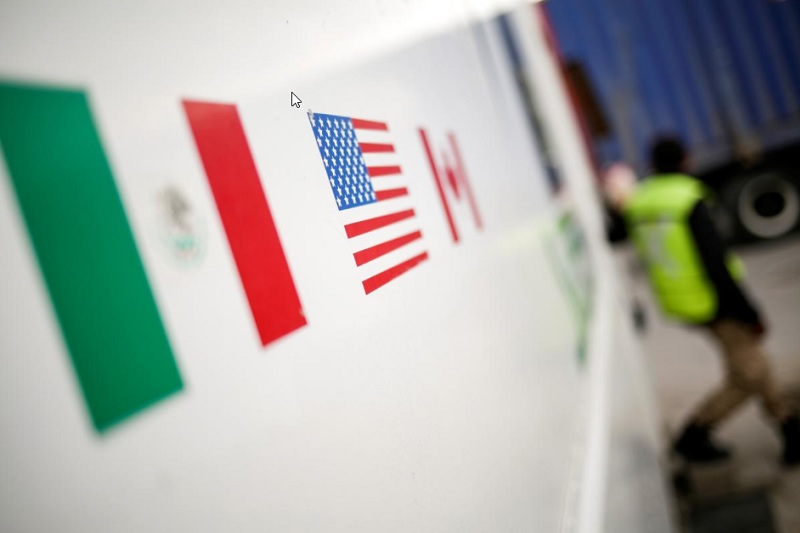ReElement Technologies stock soars after securing $1.4B government deal
Investing.com -- The United States’ decision to impose steep tariffs on imports from Canada and Mexico is likely to have a muted impact on cross-border trade, BofA says, thanks to exemptions preserved under the USMCA (United States-Mexico-Canada Agreement). President Trump announced new levies of 35% on Canadian goods and 30% on Mexican products, effective August 1, though U.S. officials clarified that goods compliant with USMCA rules would remain exempt.
Carlos Capistran, economist at BofA Securities, framed the development as a continued response to non-trade grievances. “We interpret the new tariffs as an increase of the 25% tariffs the US has imposed on Canada and Mexico over the fentanyl and migration issues,” he wrote in a research note. The increase, 10 percentage points for Canada and 5 for Mexico, still largely spares exports falling within existing sectoral exemptions for autos, metals, and agriculture.
The impact on effective tariff rates is expected to be moderate. BofA estimates these could rise to 4.2% for Canada and 6.9% for Mexico, up from 3.6% and 6.2%, respectively, due to the high share of USMCA-compliant goods in total trade flows.
Even with the new measures, Canada and Mexico retain a relative advantage in the U.S. trade landscape. Capistran noted, “The effective tariffs that Canada and Mexico are facing or could face are still far below those impacting other major trading partners, including China at close to 40%.” The EU also faces prospective tariffs that could bring its average rate near 20%, according to the bank’s estimates.
Tariff revenues recorded at U.S. Customs suggest that realized rates could remain slightly below forecast, lending further support to the view that actual trade impact may be contained. Internal BofA modeling based on May customs data shows effective rates trending beneath published estimates, indicating that exemptions and enforcement remain fluid.
With Canada and Mexico accounting for 32% and 41% of GDP in trade with the U.S., their economic exposure remains significant, but so does their incentive to remain in regulatory compliance. “We expect both Canada and Mexico to comply with US (vague) requests to get lower tariffs by the new deadline (August 1),” Capistran noted, referencing incentives to preserve market access ahead of potential flashpoints.
A broader renegotiation of the USMCA appears unlikely in the near term. Capistran stated, “Regarding USMCA, it appears the US has other top priorities now, and USMCA is working in the sense that effective tariffs are lower for Canada and Mexico than for the rest of the world.”
Looking ahead, BofA expects potential revisions to the agreement only in 2026, when mandatory review mechanisms come into play. Until then, both Canada and Mexico are forecast to remain key participants in a strategically favorable North American trade bloc, despite growing pressure from Washington to align on wider trade policy objectives, particularly with respect to China.
